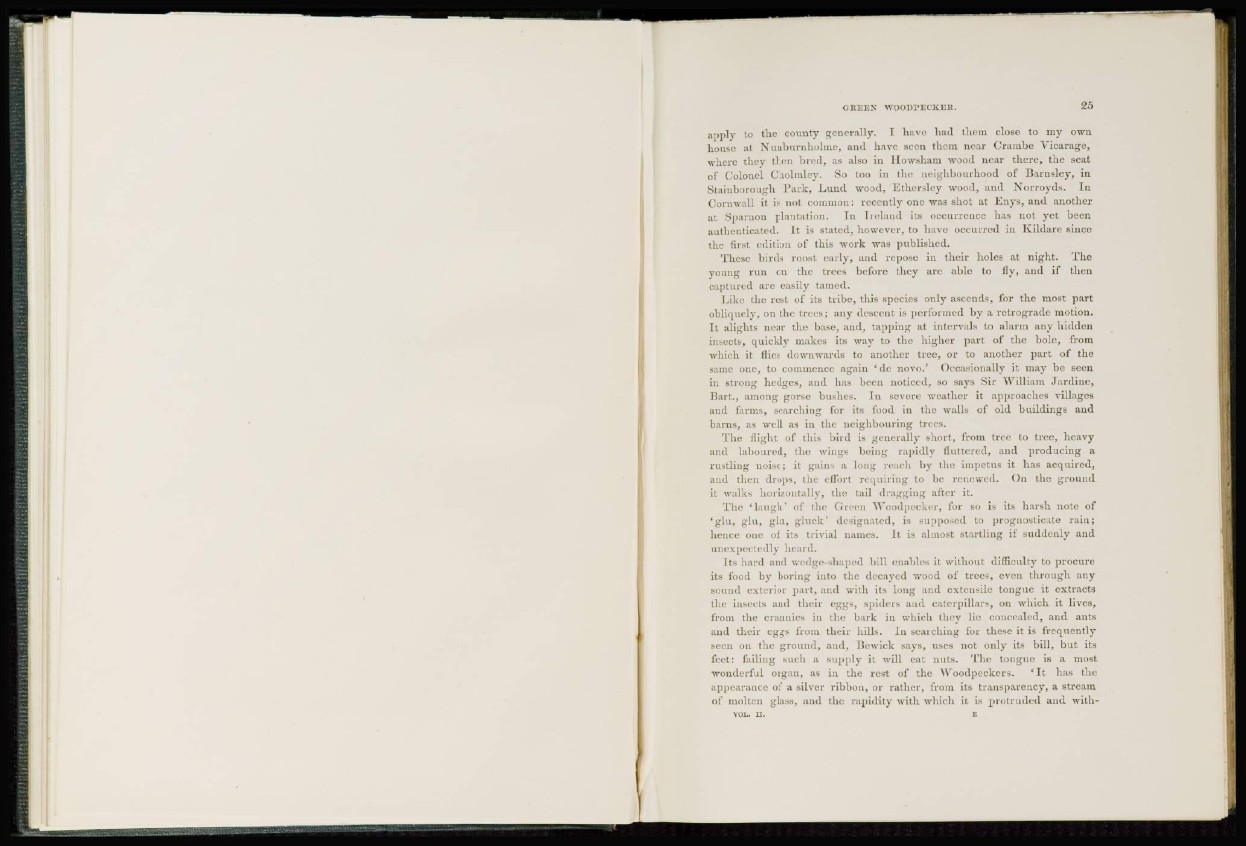
apply to the county generally. I have had them close to my own
house at Nunburnholme, and have seen them near Crambe Vicarage,
where they then bred, as also in Howsham wood near there, the seat
of Colonel Cholmley. So too in the neighbourhood of Barnsley, in
Stainborough Park, Lund wood, Ethersley wood, and Xorroyds. In
Cornwall it is not common: recently one was shot at Enys, and another
at Sparnon plantation. In Ireland its occurrence has not yet been
authenticated. It is stated, however, to have occurred in Kildare siuce
the first edition of this work was published.
These birds roost early, and repose in their holes at night. The
young run on the trees before they are able to fly, and if then
captured arc easily tamed.
Like the rest of its tribe, this species only ascends, for the most part
obliquely, on the trees; any descent is performed by a retrograde motion.
It alights near the base, and, tapping at intervals to alarm any hidden
insects, quickly makes its way to the higher part of the bole, from
which it flies downwards to another tree, or to another part of the
same one, to commence again 'de novo.' Occasionally it may be seen
in strong hedges, and has been noticed, so says Sir William Jardine,
Bart., among gorse bushes. In severe weather it approaches villages
and farms, searching for its food in the walls of old buildings and
barns, as well as in the neighbouring trees.
The flight of this bird is generally short, from tree to tree, heavy
and laboured, the wings being rapidly fluttered, and producing a
rustling noise; it gains a long reach by the impetus it has acquired,
and then drops, the effort requiring to he renewed. On the ground
it walks horizontally, the tail dragging after it.
The 'laugh* of the Green Woodpecker, for so is its harsh note of
'glu, glu, gin, gluck' designated, is supposed to prognosticate rain;
hence one of its trivial names. It is almost startling if suddenly and
unexpectedly heard.
Its hard and wedge-shaped bill enables it without difficulty to procure
its food by boring into the decayed wood of trees, even through any
sound exterior part, and with its long and extensile tongue it extracts
the insects and their eggs, spiders and caterpillars, on which it lives,
from the crannies in the bark in which they lie concealed, and ants
and their eggs from their hills. In searching for these it is frequently
seen on the ground, and, Bewick says, uses not only its bill, but its
feet: failing such a supply it will cat nuts. The tongue is a most
wonderful organ, as in the rest of the Woodpeckers. 'It has the
appearance of a silver ribbon, or rather, from its transparency, a stream
oi molten glass, and the rapidity with which it is protruded and with-
VUL. u, E